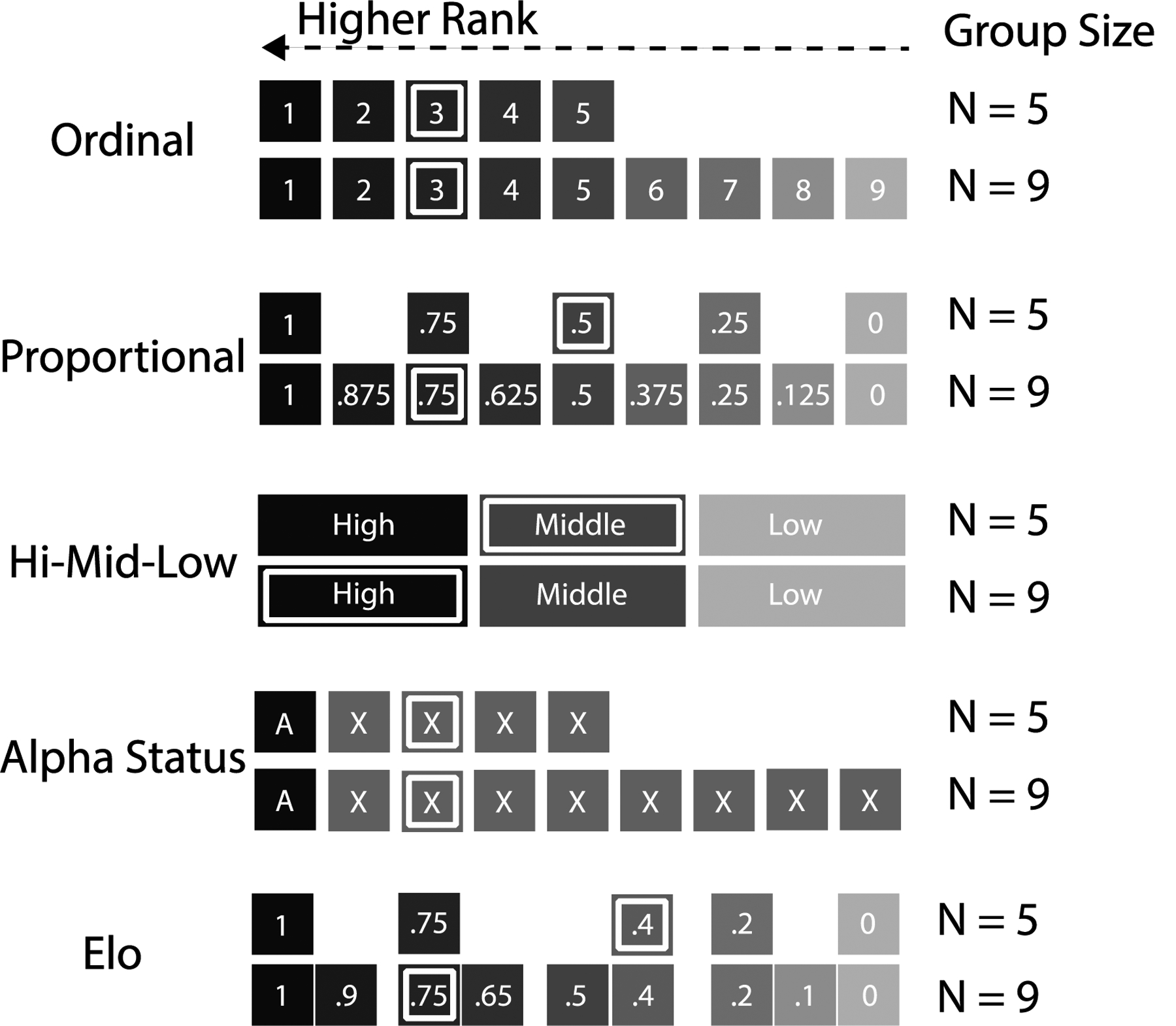Figure 1.

Visualization of the differences between five different rank metrics as a function of group size. Darker shading represents higher rank and thus greater competitive advantage. Boxes with an inner white rectangle identify the position of individuals ranked 3rd in every group. Using ordinal rank posits that being ranked 3rd confers the same competitive advantage regardless of group size. Using proportional rank posits that being ranked 3rd in a group of 9 (proportional rank = 0.75) represents a functionally higher rank than being ranked 3 in a group of 5 (proportional rank = 0.5). Categorical ranks (high-middle-low and alpha status) posit that individuals within rank categories have the same competitive advantage. High-middle-low places individuals of rank 3 with middle-ranked individuals in a group of 5, and with high-ranked individuals in a group of 9; alpha status places individuals of rank 3 in the same non-alpha category regardless of group size. Elo rating assumes that the differences in competitive advantage between adjacently-ordered individuals are not necessarily equal. Here, we give two examples (out of infinite possibilities) of Elo ratings in groups of 5 and 9.
